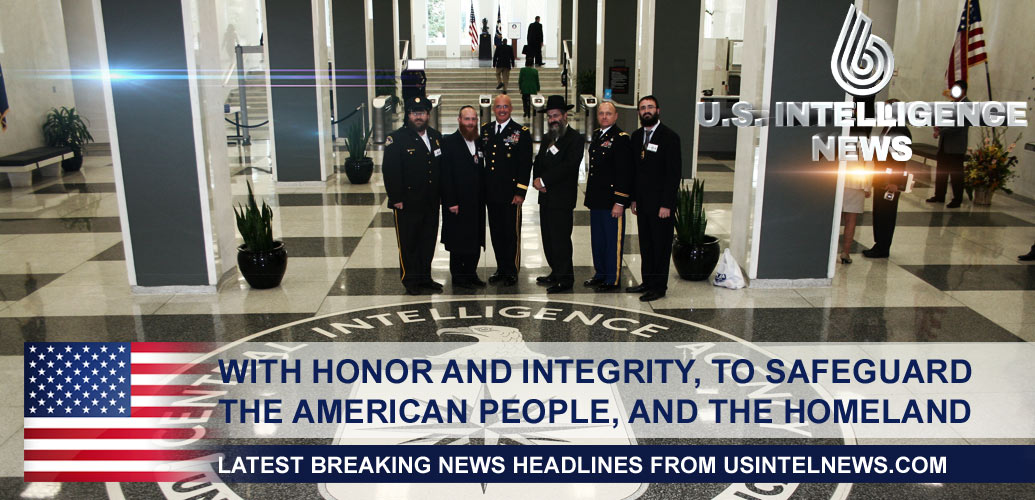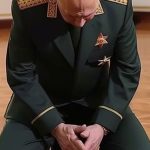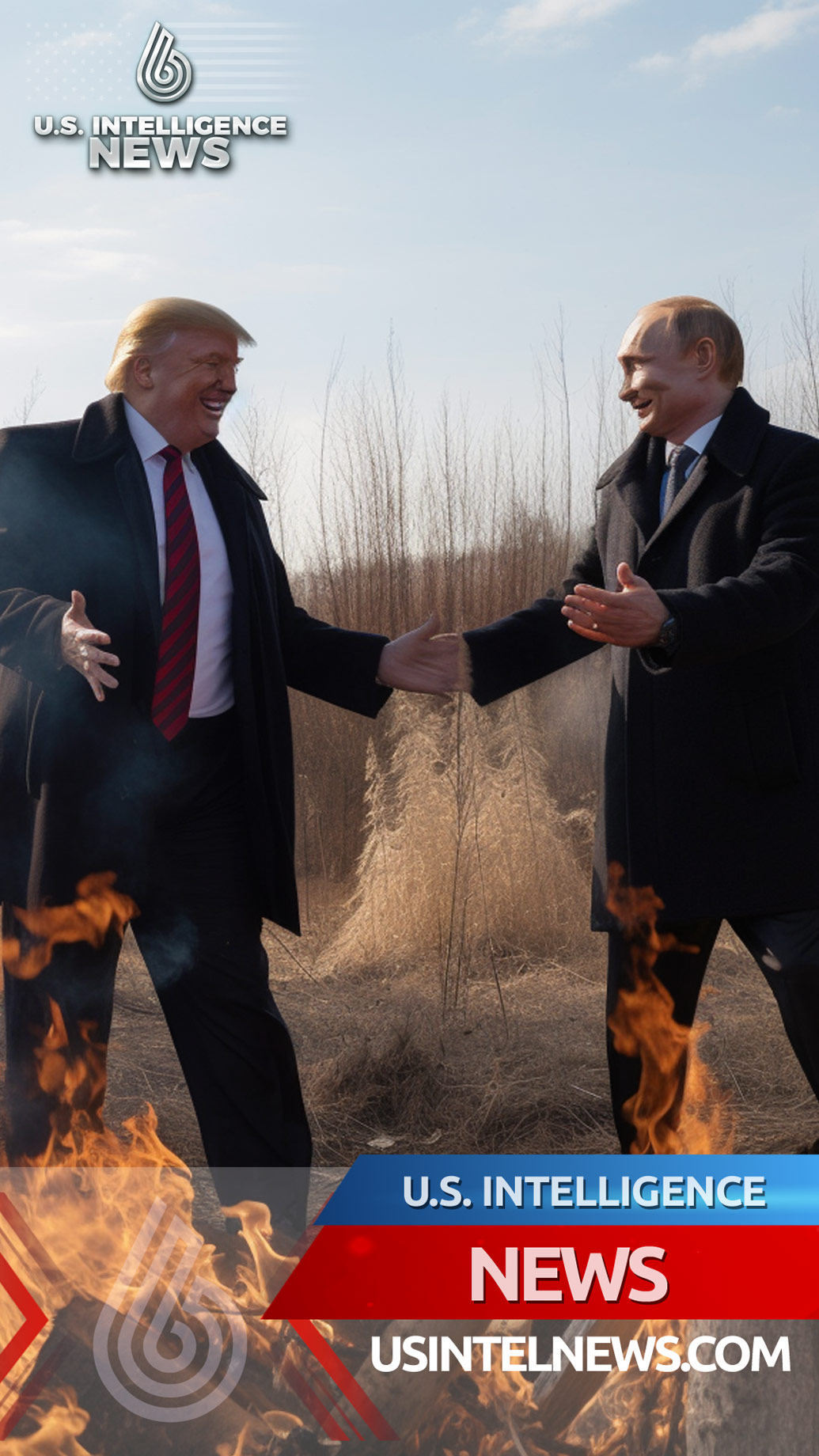
The U.S. Intelligence Community
Via Teleconference
9:34 A.M. EST
MODERATOR: Thank you, everyone, for joining us today. This is [senior administration official], and welcome to the background call on U.S. support for Ukraine.
As a reminder of the ground rules, this briefing will be on background, attributable to “senior administration officials,” and under embargo until 12:00 p.m. Eastern today, when the President is scheduled to deliver remarks.
For your awareness but not for your reporting, our three speakers today are [senior administration official], [senior administration official], and [senior administration official].
I will turn it over to our speakers for opening remarks, after which we’ll do Q&A. First, I’ll turn it over to [senior administration official].
SENIOR ADMINISTRATION OFFICIAL: Thanks, [senior administration official]. I know you guys have lots of questions, and we want to provide time for you to ask them to our experts. So, I will make this incredibly short just to sort of set up — offer some framing thoughts.
Number one, today’s announcement that the U.S. is going to send 31 M1 Abrams tanks to Ukraine is very much a continuation of our effort to provide Ukraine with the capabilities that they need to continue to better defend themselves and also, in keeping with that, representative of a long-term — long-term commitment that we have to Ukraine’s defense needs. And I know [senior administration official] will have more to say on that.
Number two, it’s also very much an indication of the strong unity and the resolve inside the international community to support Ukraine. You saw that Secretary Austin was out at Ramstein last week, one of 50 nations, for the eighth, now, Defense Contact Group.
There is incredible unity among our allies and partners to continue to support Ukraine. And that’s, I think, a real testament to the kind of leadership that President Biden has exuded here, really rallying the world through multiple levers to continue this support, as he says, for as long as it takes.
So, with that, I’m going to turn it over to [senior administration official].
SENIOR ADMINISTRATION OFFICIAL: Great. Thanks, [senior administration official]. Good morning to everybody. I just wanted to pick up on some of [senior administration official]’s comments on the alliance component of this.
I think everyone is probably tracking: Yesterday marked 11 months since this war in Ukraine started. And from the beginning, President Biden has been clear that the United States will continue to support Ukraine as they defend themselves from Russia’s brutal attacks for as long as it takes.
That’s a message that he conveyed to President Zelenskyy when he visited the White House last month, and it’s a message that we reinforced in our constant communications with the Ukrainians at all levels of government.
The President has also been clear from the beginning as he has sought to build and maintain transatlantic unity on this, as well as global support for Ukraine, that that unity has been our greatest strength. And we are seeing another example of that with today’s announcements.
As part of the conversations that we, including in military channels, are having with the Ukrainians, they’ve requested new armored vehicle capabilities to defend their territory, prepare for new counteroffensives, and increase their long-term security.
And as we have throughout this conflict, the United States has worked closely with allies and partners to provide Ukraine with what they need.
Today’s announcement follows continued diplomatic conversations that we’ve been having over the last few weeks with our European allies and partners.
President Biden has spoken with Chancellor Scholz several times this month to coordinate on security assistance to Ukraine, including the joint announcement that we made a couple of weeks ago on Patriots and the provisions of other assistance.
And there has also been engagement with many other members of the President’s team, including Secretary Austin, Chairman Milley, and National Security Advisor Sullivan with their German and European counterparts as we’ve worked to make continued progress in supporting Ukraine.
Later this morning, President Biden will call Chancellor Scholz, President Macron, and Prime Minister Sunak — so, the four leaders on the phone together — to continue our close coordination in our efforts to support Ukraine.
National Security Advisor Jake Sullivan is also convening his National Security Quad counterparts in Washington for two days of meetings to discuss support for Ukraine. They met last night, and they will continue the conversation today at Blair House.
So, what I would underscore is that today’s announcement shows the United States and Europe continuing to work hand in hand to support Ukraine, united in our common values and our ongoing support to Ukraine, which the President and other leaders, including in the G7 format, have reiterated will continue for as long as it takes.
It’s an impressive display of unity nearly a year into the conflict and, just as [senior administration official] said, similar to the strong support we saw through the Ukraine Contact Group that Secretary Austin organized last week.
Just to reiterate that: In addition to the continued support to Ukraine, President Biden’s guiding principle throughout this conflict has been to rally the world to support Ukraine and to maintain allied unity. And that’s exactly what’s happening here, as you see multiple countries across the broad coalition we’ve built stepping up to send a strong message of support to our long-term commitment to Ukraine’s defense.
So, with that, let me turn it over to my colleague, [senior administration official], who can give more details on what the U.S. is announcing today.
SENIOR ADMINISTRATION OFFICIAL: Great. Thanks, [senior administration official]. Good morning. Pleasure to be here with you this morning.
Today, we will be announcing that the United States will send 31 (inaudible) Ukrainian tank battalions. Secretary Austin is focused on ensuring that we deliver a full capability to the Ukrainians.
Together with the collective training we’ve been providing, armored capabilities will improve the Ukrainians’ ability to maneuver, which is a critical asset for Ukraine as they continue to defend and reclaim their territory.
On the tanks specifically, I’m proud to say that Abrams tanks are the best in the world. This is a tremendous new capability that Ukraine will be getting to boost its long-term defenses.
We will be procuring these Abrams tanks for Ukraine through the Ukraine Security Assistance Initiative — or USAI — funding. While the deliveries will take some time because this is a procurement, the United States will begin now to work to establish a comprehensive training program for the Ukraine (inaudible) tanks are complex systems that require a significant amount of training and maintenance. So, DoD is currently working through the mechanisms to deliver the fuel and equipment Ukraine will need to operate and to maintain the Abrams.
We do expect other nations to announce contributions of additional armored capability, including some that will be readily available for use on the battlefield in the coming weeks and months. As you all heard Chancellor Scholz announce, Germany has committed to sending Leopard tanks to Ukraine.
This Abrams announcement builds on the drawdown package that the Biden administration announced last week at the Ukraine Defense Contact Group. This package includes more than 500 armored vehicles of various types for Ukraine. And there are additional announcements that came out at the Ukraine Defense Contact Group (inaudible) in the category of armored vehicles but also in other critical capability areas, like air defense and artillery.
At this point, as we stand 11 months since Russia launched its brutal and barbaric war against Ukraine, the United States has been the leading provider of weapons and equipment to support Ukraine. But we have rallied the world and stood strong with our allies to help Ukraine defend themselves against Russian aggression.
And I would just echo the comments of my colleagues that President Biden has been clear: The United States will continue to stand with Ukraine for as long as it takes.
I welcome your questions.
SENIOR ADMINISTRATION OFFICIAL: And, [senior administration official], if we could ask you to repeat these very first two sentences of your remarks, just because it briefly cut out.
SENIOR ADMINISTRATION OFFICIAL: Oh, no. That’s the most important part. So, I just mentioned that today we’ll be announcing that the United States will send 31 M1 (inaudible) of one Ukrainian tank battalion. And then I talked about Secretary Austin’s focus on delivering a full capability to the Ukrainians.
Do you think you got it, at that point?
SENIOR ADMINISTRATION OFFICIAL: No, we kind of lost it here, [senior administration official]. But I’ll say it for everybody.
This is not attributable to me, but through [senior administration official]. Today, we’ll be announcing that the United States will send 31 M1 Abrams tanks to Ukraine, which is the equivalent of Ukrainian tank battalion.
SENIOR ADMINISTRATION OFFICIAL: Great. And then, with that, let’s open it up to Q&A. We’ll turn it back over to you.
Q Hi, guys. A couple questions. One, why 31? Two, how long will it take to actually get the Abrams into Ukraine? Why so long? Apparently, it’s at least 12 months. And three, obviously, [senior administration official], you and [senior administration official] and even the Secretary in the last few days have all said that the Abrams is unsustainable to send to Ukraine. So, what changed? Thanks.
SENIOR ADMINISTRATION OFFICIAL: Thanks, Nick. This is [senior administration official]. I’ll go ahead and take this one. So, the reason for 31 is because that is how many tanks would constitute a Ukrainian tank battalion. So, we are specifically meeting that requirement. So that’s the reason for the number.
And in terms of how long it will take, I don’t have a very precise number for you, but because this is a procurement under USAI, we’re talking months as opposed to weeks. And as with other capabilities, you’ve seen us do this before, if we do not have (inaudible) readily within U.S. stocks, then we go the procurement route to make sure that we can procure the right capability for Ukraine. And that is what we’re doing here with the Abrams.
In terms of sustainment, maintenance, training, these are all really important considerations. We will have the ability to put in place a very careful training program, but also a very careful program to be able to, you know, maintain and sustain these tanks, which do require a good deal — a good deal of assistance.
And I should mention also — this is kind of another level of detail on the procurement. In addition to the Abrams, we’re also procuring eight M88 Recovery Vehicles as part of this package. So, these are the vehicles that go with the Abrams to be able to, you know, provide recovery operations to make sure that the Ukrainians will be able to keep these Abrams up and running.
Over.
Q Thank you. Can you offer anymore texture on the complexity of the training that will be needed for the tanks? And where will the training take place?
And then, secondly, I just wanted to ask: The administration has stuck pretty strictly to the principle of only providing materiel that Ukraine can effectively use in the fight. And as you’ve noted, there are some challenges that came with the Abrams in Europe, including fuel and maintenance concerns.
So, I guess, broadly, any concern of moving away from that principle that the administration has been pretty strict with keeping throughout the last 11 months? Thank you.
SENIOR ADMINISTRATION OFFICIAL: Thanks, I can jump on that one as well. So, in terms of the training, there are multiple aspects of this training, and, you know, part of it is the training to just operate the tank. So that’s a piece of it. And you’ve seen us doing this kind of training with all of the different platforms that we’ve provided to Ukraine to make sure that they can operate the platform proficiently.
And then, separate but related to that is the training that relates to maintenance and sustainment. And usually, there are specific, kind of, maintainer crews that we can train to deal with all the complexities of maintaining, in this case, the Abrams system. But again, it is a type of training that we provide on other systems as well.
And then, the third piece: integrate this particular platform with overall maneuver operations. And this is where you begin combat maneuver training, that we are supporting the Ukrainians to be able to synchronize all of their different capabilities — their armor capabilities, their fires capabilities — and do so in a unified way that will enable them to retake territory. And so, there are multiple different platforms that — that apply to this training, and the Abrams will be just yet another platform that will be integrated with this kind of training.
And in terms of, you know, the timeframe focus, I would say that we have been really focused like a laser on capabilities that we can field very quickly to support the Ukrainians on today’s battlefield. But that has not been an exclusive focus. You have seen us invest in longer-term capabilities, especially when we know that these cap- — (inaudible) — in years to come.
So, for instance, you’ve seen us drawing down HIMARS, which, you know, the Ukrainians have used exceptionally well on the battlefield. But at the same time, we’ve also procured HIMARS that will not arrive for months, that we’ve procured by USAI because we see that enduring need for the HIMARS platform. So that’s just one example.
Over.
Q Where will the training take place?
SENIOR ADMINISTRATION OFFICIAL: I don’t have confirmed details on the specific location of the training at this point, but we’ll certainly provide that in the future.
SENIOR ADMINISTRATION OFFICIAL: This is [senior administration official]. It will not occur in Ukraine, Aamer. It will be outside Ukraine.
Q Hi. Just making sure you can hear me.
SENIOR ADMINISTRATION OFFICIAL: Yeah, we can hear you.
Q Okay, just checking. Two related questions. One, will you be providing an M1A1 or an M1A2? And will it have the depleted uranium cage?
And then, on the issue of the depleted uranium, will you also be providing depleted uranium ammo for the Bradleys? Thank you.
SENIOR ADMINISTRATION OFFICIAL: Thanks. I’m not going to get into the technical specification of this specific platform.
Q And on the Bradleys ammo question?
SENIOR ADMINISTRATION OFFICIAL: I’m sorry, I might not have heard. What was your other question?
Q Will you be providing depleted uranium ammunition for the Bradleys, which is part of what makes them the “tank killer” that Pentagon officials called them?
SENIOR ADMINISTRATION OFFICIAL: Again, I’m not going to get into the technical specifics on either platform. Thanks.
Q Hello, could you give us a sense — a little bit of the behind-the-scenes conversations with the Germans that led up to this joint decision?
SENIOR ADMINISTRATION OFFICIAL: Thanks for that question. I’ll just repeat a number of the things that I said at the top, which is that we have had the constant and ongoing conversations with the Germans and a number of our European allies, frankly, throughout this conflict but in a much more intensified way over the last number of weeks.
National Security Advisor Jake Sullivan has been in touch with his counterpart senior officials. The Pentagon have been in touch with their counterparts, including Secretary Austin’s trip to Germany last week — both his meetings in Berlin, as well as his convening of the Ukraine Defense Contact Group. And also, as you have seen, President Biden has spoken with Chancellor Scholz several times over this month to coordinate security assistance to Ukraine.
Today’s announcement really was a product of good diplomatic conversations and part of our regular and ongoing close consultations with allies and partners on security assistance to Ukraine.
Certainly, very appreciative of Chancellor Scholz’s announcement today. It really is remarkable if you look back over the last year to see the extraordinary shift in Germany’s security policy.
In addition, of course, to the announcement that they’ve made today, they’re also providing other critical high-end capabilities to Ukraine, including the IRIS-T air defense system and MLRS system. And they committed, as we announced together a couple of weeks ago, to provide Ukraine with infantry fighting vehicles and a Patriot missile battery.
Q And did the Germans make it a precondition that the United States had to agree to send Abrams in exchange for the Leopards?
SENIOR ADMINISTRATION OFFICIAL: As I said, this really was an iterative conversation that we have been having with the Germans. You know, we’ll refer to the German government for them to speak on the timing and nature of their own decision. But certainly, we have closely coordinated our security assistance with allies and partners throughout the conflicts, including Germany.
And as I said at the top, the President has been extremely focused on the importance of alliance unity, of transatlantic unity, and we have tried to make that a hallmark of everything that we have done for Ukraine throughout the 11 months of this conflict.
Q Thank you very much. Could I follow up on Nick Schifrin’s initial question? Part of the question was: What’s changed? Because you’ve had plenty of diplomatic conversations and military conversations, but as recently as a few days ago and certainly last Friday on the Secretary’s trip, there was no change in the posture — that we were all told that it would take too long (inaudible). So, what has significantly changed in the past couple of days to make this — quite a reversal? Thank you.
SENIOR ADMINISTRATION OFFICIAL: Hey, Andrea. It’s [senior administration official] here. I think, in terms of change, one of the things that we’ve been trying to do is do the best we can to evolve the capabilities we’re providing with — to Ukraine with the war itself.
And I think as we all look at what’s happening now and what we expect to happen in the future, particularly in the Donbas area, the kinds of capabilities that Ukraine really needs are, as [senior administration official] said, combined arms maneuver capabilities — the ability to fight effectively in open terrain, particularly. And armored capabilities are a key part of that.
You’ve already seen us provide Bradleys and Strykers. And — and we’ve been talking about tanks internally, and we certainly have been talking about tanks externally with allies and partners now for quite some time, given what we expect will be the kinds of fighting that will occur in weeks and months ahead — that the fighting has not stopped over the course of the winter, nor do we expect it to.
And so, this is very much in keeping with a constant conversation that we have had with allies and partners — as well as, of course, Ukraine — about what they need.
And, you know, we’ve said all along the capabilities we’re going to provide are going to evolve with the needs of the war. And I think that’s what you’re seeing here.
I think [senior administration official] said it, really, best when talking about the fact that there are technical aspects to the Abrams which makes it a little bit more challenging than some systems that we have provided Ukraine in the past.
It is the most capable tank in the world, but it’s also the most sophisticated. And there’s supply chain issues that have to be dealt with, certainly training and maintenance issues that have to be dealt with.
And that’s why we’re doing it this way through USAI, so that we can take the time — not too much, but take enough time– to make sure that that when they get into the field, that the Ukrainians can use them and maintain them and keep them in the fight effectively on their own. And that’s — and that’s really where we are.
So, you talked about change. We have been changing throughout the last 11 months, trying to evolve with the capabilities that are most needed in the — in the fight.
And that (inaudible) unity — keeping unity inside the alliance and with our partners has also been really important for us. And so, coupled with this near-term commitment that the Germans have made on Leopards, you know, we think that this contribution by us with the Abrams represents the long-term commitment.
And when you talk about retaking territory, because you were earlier — (inaudible) earlier that — in an answer to AP, I believe — that this would be a unified way to retake territory. Are you talking about retaking territory in the Donbas, or are you talking about Crimea?
SENIOR ADMINISTRATION OFFICIAL: We’re talking about Ukrainian territory, Andrea. Territory that is, by international boundaries, recognized boundaries, Ukrainian territory.
And like I said many times before, we don’t tell the Ukrainians where to strike, where to attack, where to conduct offensive operations. That’s — these are their decisions to make, but we want to make sure that they have the right capabilities to not only defend themselves against the Russian onslaught — and we do expect that Mr. Putin and the Russian military will try to go on the offense here in coming weeks and months as the weather gets better — but also that they had the ability to retake and to reclaim their sovereign territory. And that means everything that is recognized by international borders.
Q Well, that would include Crimea.
SENIOR ADMINISTRATION OFFICIAL: Again, we’ve — we’ve long said, Andrea, Crimea is Ukraine. Crimea is Ukraine. We’ve never recognized the illegal annexation of Russia — of Crimea.
But where the Ukrainians decide to go and how they decide to conduct operations in their country, those are their decisions to make.
Q Hi, thanks for taking my question. So, now that the, kind of, dam, you could say — the diplomatic dam, at least, has broken on the tanks, how many tanks do you expect the Ukrainians to be getting overall from all the various alliance countries? Ukraine had talked about wanting a figure of 300. Is that a realistic number they should be aiming for?
And then, just one very specific point: You said that in — “within weeks,” is the way you said it, other nations should be sending armor. When you say “armor,” could — can I assume that means tanks? In other words, will Western tanks be in Ukraine within weeks? Thank you.
SENIOR ADMINISTRATION OFFICIAL: Thanks. So, maybe I’ll just frame this out a little bit. You know, I think that, at times, what you will hear from the Ukrainians reflects their overall armored vehicle requirements, which include — (inaudible) — is an example of the Leopard, is an example of — but also includes, you know, things like Humvees — armored humvees, which, you know, we’ve provided 1,700 humvees at this point from the United States, for example.
So, I think that, you know, giving you a very precise number of — exact numbers of tanks that are likely to arrive in Ukraine over the next few weeks is tricky at best.
But what I can tell you is that at the Ukraine Defense Contact Group and in the weeks and, really, the days leading up to it, we did hear some major commitments by allies of additional armored vehicles and tanks, including the Challenger tanks from the UK. Certainly, the U.S. and the Netherlands are still working to deliver 90 T-72 tanks, which we had refurbished, and about half of those are arriving on the battlefields now. You also have France announcing their an AMX-10 light tanks.
And then in the armored vehicle category — or in the infantry fighting vehicle category, in addition to the U.S. Bradleys — and we’re over 100 at this point — you also had the 40 Marders from Germany. And Sweden also has announced 50 CV-90s. And there’s a host of Soviet-era BMPSs that were also announced.
So you’re going to see hundreds of armored vehicles — exceptionally capable vehicles and tanks — arriving in Ukraine. And, you know, importantly, they will be arriving with trained crews that are prepared to operate as part of a larger op- –(inaudible) — that our allies and partners are doing.
Over.
Q Yeah, thanks very much. Just — I don’t know if it was the same for everybody, but my line was cutting out quite a bit during your response. Can I just rephrase the one quick time?
How many tanks — and I’m talking about tank tanks — do you think the Ukrainians need to achieve the goals that they want to achieve and that you guys are helping them achieve? Thank you.
SENIOR ADMINISTRATION OFFICIAL: Thanks. I’m sorry, I guess my line keeps cutting out. I’m not sure what’s happening.
But, you know, for the total requirement number, I would — I would go to the Ukrainians for what their requirements are for their specific, immediate operational needs. And I wouldn’t want to speak for them, but I can tell you that they will be receiving hundreds of armored vehicles and tanks to support near-term operational needs.
I hope you could hear that.
Q Yeah. I got that bit. Thanks very much. I got most of it, actually, but thanks.
MODERATOR: Thank you very much. I just wanted to say thank you again to [senior administration official], to [senior administration official], and to [senior administration official] for taking the time to do this call. And thank you to all of you for tuning in and for joining us as well.
Just as a brief reminder of the ground rules: This call was held on background, attributable to “senior administration officials.” And it is embargoed until 12 p.m. Eastern Time, which is when the President is scheduled to deliver remarks. And I hope you all turn — tune in for that.
Thank you very much. And I hope everyone has a wonderful day.
10:04 A.M. EST
The post Background Press Call by Senior Administration Officials on U.S. Support to<span class="dewidow"> </span>Ukraine appeared first on The White House.


 Scandal Surrounding Samuel Abu Jinapor: His Role in the Sale of Prestea Bogoso Mine and the Case for Transparency
Scandal Surrounding Samuel Abu Jinapor: His Role in the Sale of Prestea Bogoso Mine and the Case for Transparency  Breaking News: Armenia Facilitates Russia’s Gold Sanctions Evasion in Billion-Dollar Trade Scheme
Breaking News: Armenia Facilitates Russia’s Gold Sanctions Evasion in Billion-Dollar Trade Scheme  Breaking News: Kremlin Warns of ‘World War III’ Amid Escalating US-Russia Tensions
Breaking News: Kremlin Warns of ‘World War III’ Amid Escalating US-Russia Tensions  Bitcoin and Tether Self-Destruct: How Ethicoin is Redefining the Future of Ethical Finance
Bitcoin and Tether Self-Destruct: How Ethicoin is Redefining the Future of Ethical Finance 


